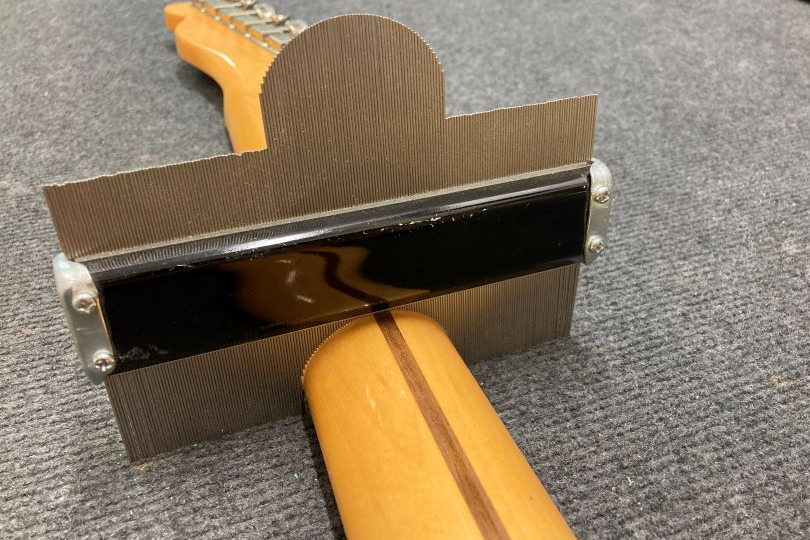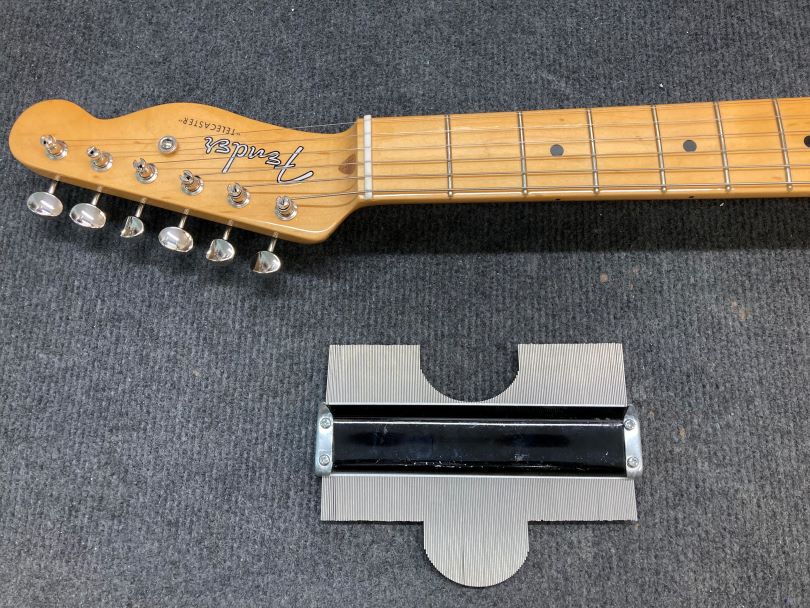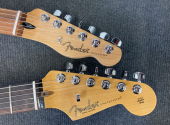
Under the Hood #27: Tadeo Gomez‘s Famous Fender Necks
Throughout its long history, Fender has had several key personalities who have become known as visionaries, close associates of Leo Fender, or those who have moved the company forward in various ways. But we must not forget the people who actually created the guitars in question. Probably the most famous person of this ilk was Tadeo Gomez. The guitar necks he made have become legendary over time.
Fender guitars are popular for many reasons. Not only for their quality, appearance and sound but also for their practicality. This is because whenever something is damaged on the guitar, or something needs to be adjusted, the instrument can be disassembled down to the last screw and part. Some of the parts were also handmade in a rather unique way.
Manual production as part of the process
Necks, for example, were made by hand. These are crucial for guitarists because it is their size and shape that determines the feeling of playing and playability. And Fenders from the first half of the 50s have great necks that are still copied worldwide.
The handmade bodies and necks were signed by the workers upon completion. In the early years, they wrote their initials and the date and year of production in ordinary pencil. This allows us to decipher, even years later, who was involved in making the guitar and exactly when each part was made. Today we know that the individual parts of the guitars were made at different times. Most of the time we can't say that this is a Telecaster from 1955 and so on, because it happens that the neck, body and potentiometers are each from a different year. But we can reliably place guitars into short time periods.
Over the years, as production has progressed, some workers have developed their production specialisation to a high-quality level. As a result, some particular models are of higher quality or more desirable than others. And that's exactly the case of the guitars from the first half of the 1950s that Tadeo Gomez made the necks for. A man about whom very little is known, but whose work is perhaps the most appreciated today.
Thus, although Tadeo Gomez specialized in necks, he was also involved in the production of bodies during his early years at Fender. This was probably because the company was not yet so coherent and the staff often changed positions. It was only years later that the production and running of the factory became professionalised.
Who is Tadeo Gomez, in fact?
Tadeo Gomez's life is not very traceable. A glimpse of his activities is provided, for example, in a 2001 article in the La Habra Journal, which you can read in its entirety at Guitarhq. Tadeo was born in 1902 in the Mexican state of Jalisco, in the town of La Cueva. He became an orphan relatively early on. He followed his brothers to Arizona to work in a silver mine. Reportedly, he travelled along the railroad tracks and subsisted on banana peels. In 1925, he married a girl named Petra, and they stayed a couple for the rest of his life in 1986 when he died of cardiac arrest. During his lifetime he had a business alongside his work at Fender—a small thriving shop.
Gomez apparently started working at Fender in the late 1940s. His signature was found on the first Broadcasters. He lived in La Habra, about five miles from the Fender factory, where several people from the area worked.
His life has not been mapped out in any detail, as no one around him seemed to know that his work at Fender would, over the years, take on the air of something valued and special. It wasn't until his grandson James was surfing the web one day that he found information about his grandfather's work, its history and its great value.
In the aforementioned article, there are snippets from an interview with James, where he says that this information came as a shock to him. He went on to find out details about how guitars signed by his grandfather were selling for tens of thousands of dollars. At the time, Tadeo was already dead, so it was impossible to ask him for details. It's a pity, as it would certainly have been an interesting story and, more importantly, would have preserved valuable information about how the first necks on Telecasters and Stratocasters were developed.
In the same article, we can also read the answers of Tadeo's son Ben, who talks about how his dad sometimes took him to the Fender factory when he was only ten. He remembers seeing Tadeo working outside, sanding and shaping necks. Tadeo would take some of the necks home with him to show off his work, but none of them was preserved in the family. It is interesting to note Ben's mention that Tadeo taught woodworking himself and that it was never a problem for him to learn something new.
In addition to the general information about Gomez's career at Fender, it should be added that he left them in 1957 to work as a labourer at Disneyland. He returned to Fender during the 1960s, not as a precision neck builder, but as a maintenance man. He was in his sixties by then.

Why are Tadeo's necks so prized?
After this brief summary of Gomez's life and career, one wonders why his necks are so popular and prized. Huw Price provides an interesting insight in his comprehensive article on Gomez. For one thing, there are suggestions that Tadeo was involved in developing the Soft V neck profile. It's hard to know if this information will ever be confirmed. What is undoubtedly Gomez's work, however, is the transition between the back of the headstock to the area behind the zero fret.
Overall, the neck profile from Gomez's era at Fender still fits many players today. Many Custom Shop guitars have necks made to these exact specifications.
The necks of the first Telecasters are massive; they are called baseball bats. To date it is one of the most popular profiles, for me personally the best. But that's always a matter of taste, which we all have different.
In any case, the Telecaster as such laid the foundation for the modern electric guitar, and many developers and guitarists still build on it today. Neck sizes from different years and eras are still copied. And since early Fenders are the most desirable commodity not only for collectors, the signature of Tadeo Gomez, who is inseparably associated with this era, logically grows in price.
Many enthusiasts and collectors consider Gomez's necks to be the best. On the aforementioned Guitarhq we can also find the opinion that all guitars with Gomez's necks are better, more playable and enjoyable. This is, of course, a subjective view. I would love to have the opportunity to try a few necks from this guy and make up my own mind. We also must remember that it was because of completely handmade production that all necks were not the same as they are today when there are machines for everything.
But there are also opposing views, for example from Richard DiZerega, who says that the legend of Tadeo Gomez is artificial, mainly because his name is on a large number of guitars from the famous era. He believes that Tadeo was merely an unqualified worker, but one who was skilled and fast, which is why his necks made it big.
Were all the necks really Gomez's?
Huw Price also mentions that there have been speculations over whether the necks signed by Gomez are actually his own work. In fact, there are some discrepancies in the signatures on the neck heels. The writing is sometimes rather round, other times square, sometimes the full name is written, other times just the abbreviation, and sometimes the initials. There are opinions that Tadeo may have had people who made the necks under his direction and were subsequently instructed to sign on his behalf.
Either way, I guess it doesn't change the legend of Tadeo Gomez, as this information will probably never be fully tracked down. Maybe that makes the whole story even more interesting.
Gomez neck guitars as one of the most valuable
Telecasters from the early 1950s are still highly prized today and sell for huge amounts of money. I keep finding ads for so-called Blackguard Telecasters signed by Tadeo Gomez for tens of thousands of dollars. Collectors are slowly getting these pieces off the market; no one really wants to get rid of them. It's a very good investment.
I remember seeing an episode of Masters of Pawn where a man who had inherited a Fender Telecaster in his family came in the show with Tadeo Gomez's signature. He had no idea what kind of treasure he was holding. So maybe one of us has a similar haul waiting somewhere in the attic...
If you have found an error or typo in the article, please let us know by e-mail info@insounder.org.


